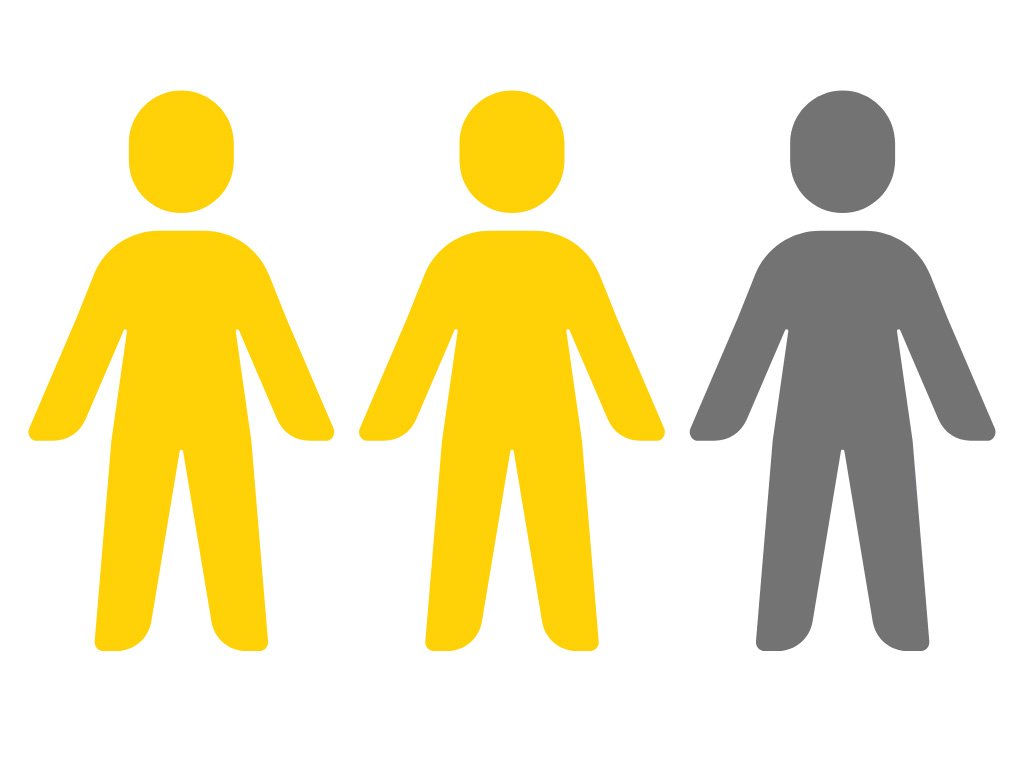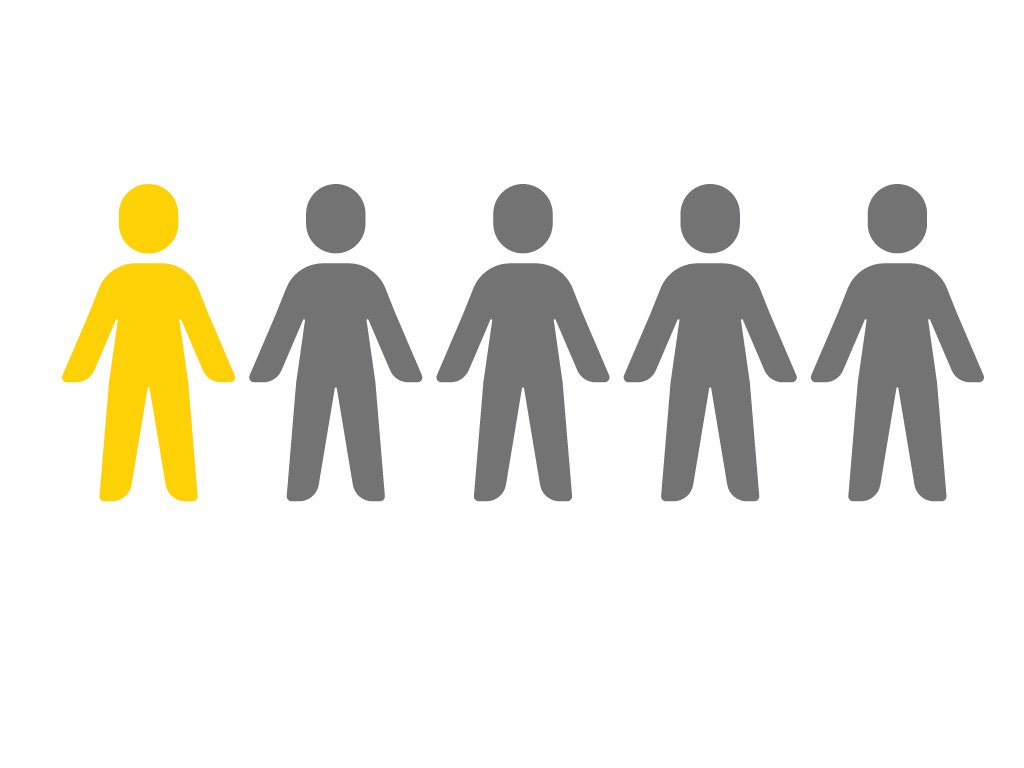
Facts + Research
Fast Facts
Roughly two-thirds of all full-time human services workers had 2019 earnings below the City’s near-poverty threshold.
Human services workers make 30% less than what government employees make for the same role.
22% of human services workers received SNAP benefits in 2021.
Research
Source: New York City Independent Budget Office, Fiscal Brief: Employees of Human Service Nonprofits Under Contract with New York City Set to Receive Less Than Half the Raises of NYC Employees Over 5 Years, November 2023
Salary and wage rate increases for these nonprofits take place outside the negotiated union structure that governs wages for City employees. Instead, increases for nonprofits— when they happen— occur through the service procurement process and rarely match negotiated raises. This has led to a growing wage gap between the two sectors, a gap which will only increase after the most recent contracts between the City and the municipal labor unions, most of which are modeled on the contract for District Council 37 (DC 37), the City’s largest municipal union.
If the City applied a COLA matching the DC 37 pattern beginning in 2023 to the Workforce Enhancement Initiative-eligible portfolio, it would translate to 16.2 percent for the resulting COLA in cumulative raises, compared with 7.3 percent for the actual WEI. For the City to match the cumulative raise of the DC 37 pattern, a minimum of $416 million (or 59 percent) would need to be added to the budget. This amount would still only cover the pool of WEI-eligible nonprofit contracts, in addition to the roughly $40 million in non-City funds that have been pledged but not yet budgeted.
There are additional elements of the DC 37 bargaining agreement that widen the gap between City and nonprofit workers which IBO cannot yet model. First, the DC 37 contract includes an $18 minimum wage, and a $3,000 one-time bonus for eligible members. IBO cannot access employee-level PS data for nonprofit providers, making it impossible to model the cost of these contract elements for that population. Second, the DC 37 pattern applies retroactively to union members, commencing the day after the previous contract expired (May 2021 for most DC 37 contracts); this retroactive application has not been used in COLAs for the nonprofit providers in the past, so IBO modeled the COLA as if it were applied as of the date of the agreement (fiscal year 2023). This effectively means that nonprofit providers will not receive raises from 2020 through 2022, while municipal employees have been made whole for that period. Third, IBO’s estimates are based on 2023 contracted salaries and there may be pre-existing gaps in salaries between nonprofit providers and City employees with similar job responsibilities and titles. All of these factors would contribute to further widening the gap.
In New York City, women make up 83 percent of the care sector workforce, 68 percent of the education workforce, and 63 percent of the middle-wage professional jobs.
The industries with the highest concentrations of women (e.g., the industry workforces most skewed toward women) are: carework, including social assistance (individual and family services jobs), the home health sector, and childcare; and middle- wage professional jobs.
Women working full-time are generally paid less than men in the same racial or ethnic group.
White women lag their male counterparts by the largest gap (86 cents for every dollar), while Black women are closer to pay parity with their male counterparts (93 cents for every dollar). However, Black women’s median hourly earnings are lower than white women’s in absolute terms ($23 compared to $35 for full-time workers). Similarly, Hispanic or Latina women earn 92 cents on the dollar paid to full-time male workers in the same ethnic group, but their earnings level is less than two-thirds that of white women.
In New York City, for full-time workers ages 18 to 24, women were paid 80 percent of what men were paid on an hourly basis. This disparity grows for prime-age workers (ages 35 to 44), where women earn 67 percent of the median male hourly earnings. The gap is even larger for older workers, ages 55 to 64, a range in which women earn only 56 percent of median male earnings.
Source: Women Creating Change, Closing the Gender Pay Gap Why Pay Equity Has Stalled in New York City and the Urgent Need for Action, November 2023
The human services contract workforce employs over 80,000 workers and is staffed predominately by workers of color (75 percent) and women (70 percent).
Women of color constitute 55 percent of this workforce. And roughly two-thirds of all full-time human services workers had 2019 earnings below the City’s near-poverty threshold.
Human service workers make between 20-35 percent less in median annual wages and benefits than workers in comparable positions in the public and private sector.
City government reliance on the nonprofit human services sector for a broad range of vital public services has steadily grown over at least the past three decades. During that time total New York City employment in the core social assistance sector doubled, increasing more than two-and-a- half times as fast as total private sector employment.
Source: Center for New York City Affairs, The Case for Ending Poverty Wages for New York City’s Human Services Workers, March 2022
Source: Human Services Council of New York, Essential or Expendable? How Human Services Supported Communities Through COVID-19 and Recommendations to Support an Equitable Recovery, June 2021
Human services workers generally make about 71% of what government employees make, and 82% of what private sector workers receive for the same role.
Human services workers are overwhelmingly female (66%), over two-thirds are full-time workers of color (68%), and nearly half (46%) are women of color. These shares are considerably higher than for New York City’s overall private sector workforce, where only a quarter (26%) of private sector workers overall are women of color. As such, pay disparities in this sector have important consequences for race and gender equity.
Human service workers with a high school education and higher, core human services workers generally make about $20,000 a year less than a public sector worker with a comparable education.
Poverty pay in the core human services sector means that 15% of all workers (both full- and part-time) qualified for food stamps in the 2016-18 period analysed, higher than the 12% share for all private sector workers, and much higher than for government employees (9%).
Many human services nonprofits are struggling with high vacancy rates, with an estimated average vacancy rate around 11% as of March 2021, 54% of whom had a vacancy rate higher than 10%, and over 30% had a vacancy rate higher than 15% resulting in unsustainable workloads.
Source: Fiscal Policy Institute, Building a More Equitable New York: Human Services Nonprofits, February 2020
New York State Human Services workforce is comprised of upwards of 800,000 workers.
Sixty-eight percent of New York State’s nonprofits anticipated being unable to meet pre-COVID-19 service demands of their communities due to underfunding.
New York State' statutory cost of living adjustment (COLA) was deferred every year under Governor Cuomo’s tenure except FY22, which stripped essential human services workers over a half-billion dollars in pay.
Between 2008 and 2018, the State cut human services funding by 26 percent, with lower rates now than in 1980.
There are approximately 110,000 human services workers working at organizations that contract with New York City.
Annual wages for human services workers are sector the second lowest-paid of all industries in the City, only after restaurants.
Employment in the human services sector has grown nearly two-and-a-half times as fast as overall private-sector job growth in New York City since 1990.
Source: The Center for New York City Affairs, The Road to and from Salary Parity in New York City, January 2020.



